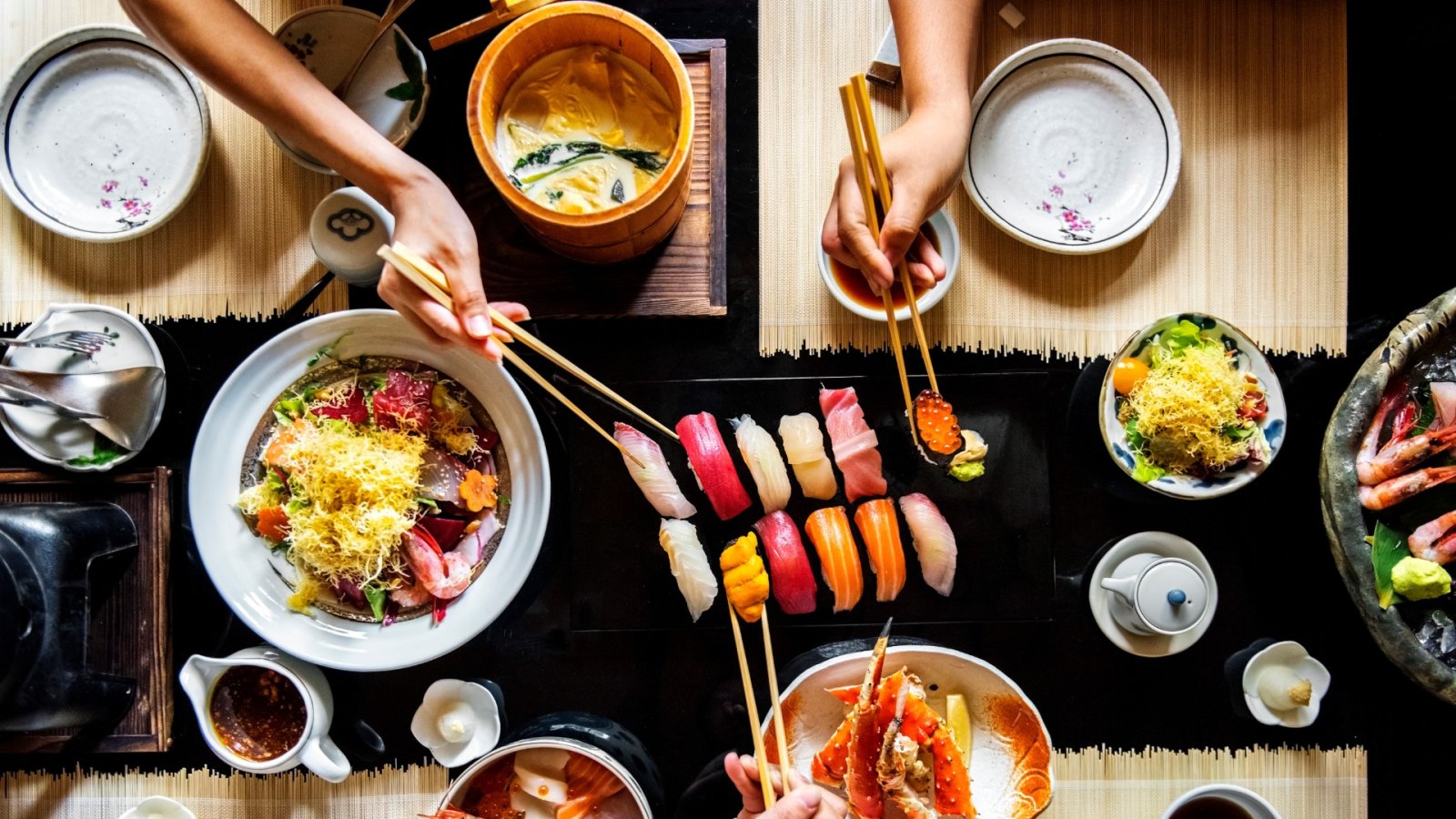Wherever your travels take you across Japan, stumbling upon superb culinary experiences is effortless. Many restaurants focus their entire menu on perfecting just one signature dish, diligently sourcing the highest quality local ingredients and meticulously crafting each presentation. What's more, Japanese cuisine proudly showcases great regional diversity - a point not lost on diners seeking to sample specialties unique to different prefectures. Whether indulging in delicate kaiseki multicourse feasts, slurping hearty noodles, or snacking on street snacks, the variety of flavors and care put into every meal leaves visitors with unforgettable food memories of this culturally rich country.
Discover Delectable Sushi, from Kaiten-Zushi to Omakase
While sushi has come to epitomize Japanese cuisine worldwide, it is merely one facet of the country's rich culinary traditions. Nigiri-zushi, thinly sliced seafood atop vinegar-scented rice, reigns supreme in Tokyo. Kaiten-zushi restaurants offer the conveyor belt experience for sampling variety. More discerning establishments prioritize the natural flavors through sparse, refined settings. The brave of palate can thrill in an omakase tasting, relinquishing menu control to the chef and uncovering novel preparations not easily found elsewhere. Whether casually grazing assortments or indulging in a multi-course omakase, sushi underscores Japan's focus on seasonally fresh, artfully presented dishes.
For a more budget-friendly and casual sushi experience, try kaiten-zushi (conveyor belt sushi). Here, ready-made plates circulate endlessly on a moving belt, allowing diners to simply select what appeals to them as it passes by. Your bill depends on the number of plates taken. Some sushi etiquette tips: at higher-end restaurants especially, the chef has carefully prepared and seasoned each piece to be enjoyed as-is without soy sauce, unless instructed otherwise. When dipping is allowed, only submerge the fish side of nigiri, not the rice. It's perfectly acceptable to pick up sushi with your fingers too. Between pieces, pickled ginger (gari) is provided to refresh your palate. Proper observation of these customs shows respect for the sushi craft.
Indulge in Sensory Seasonal Dining - Kaiseki, Japan's Epitome of Haute Cuisine
Kaiseki represents the pinnacle of Japanese fine dining where ingredients, preparation, ambiance, and presentation harmonize to create a highly ritualized tasting experience. The fundamental principle is showcasing ingredients at their flavorful peaks according to the season, enhancing their natural qualities with minimum seasoning. Table settings and garnishes are deliberately selected to evoke seasonality and complement each dish. A truly authentic kaiseki meal can be found within a traditional ryokan inn. Whether enjoying communal dining amid tatami floors and charcoal braziers or a private multi-course seating, every course is a work of artistic flavor and visual appeal pleasing all the senses. Diners are treated to gastronomic seasons within each tasting, a renowned expression of Japan's refined culinary aesthetic.
Discover Flavorful Shōjin-ryōri, Japan's Buddhist Vegetarian Cuisine
Shōjin-ryōri is a Japanese vegetarian cuisine defined by its Buddhist roots, free from meat, fish, onions and garlic. Instead, tofu takes center stage prepared through innovative flavorful techniques beyond usual expectations. Seasonal sansai (wild mountain greens), mushrooms and mountain yams also feature prominently. Experience this refined art at one of the mountain monastery temple lodgings (shukubō) within sacred Kōya-san.
Discover Iconic Soba and Udon Noodles Across Japan
Soba refers to thin brown buckwheat noodles, sometimes blended with wheat, while udon comprise thicker white wheat noodles. Noodle shops may specialize in one variety or offer both. Generally, soba noodles dominate eastern regions and udon in western areas, yet each incorporates local innovations.
On summer days, refreshing chilled zaru soba or zaru udon (served on distinctive bamboo trays) come accompanied by a light dipping tsuyu broth or artfully drizzled atop. During colder weather, nothing warms the soul like hot bowls of noodles simmered in savory broths or topped with crispy tempura.
Explore Street Markets and Discover Local Specialties
Street markets provide a delightful way to sample novel regional delicacies with an empty stomach in Japan. Wandering crowded stalls overflowing with visually arresting snacks and intoxicating aromas becomes a feast for the senses. Curiosity leads to new discoveries around every corner. Joy emerges from spontaneously claiming one of the few counter seats serving hyper-local specialties and interacting directly with passionate artisans. Japan's lively markets invite surprise around each new discovery, whether sampling something familiar with an unexpected twist or debuting an innovation unknown elsewhere.






